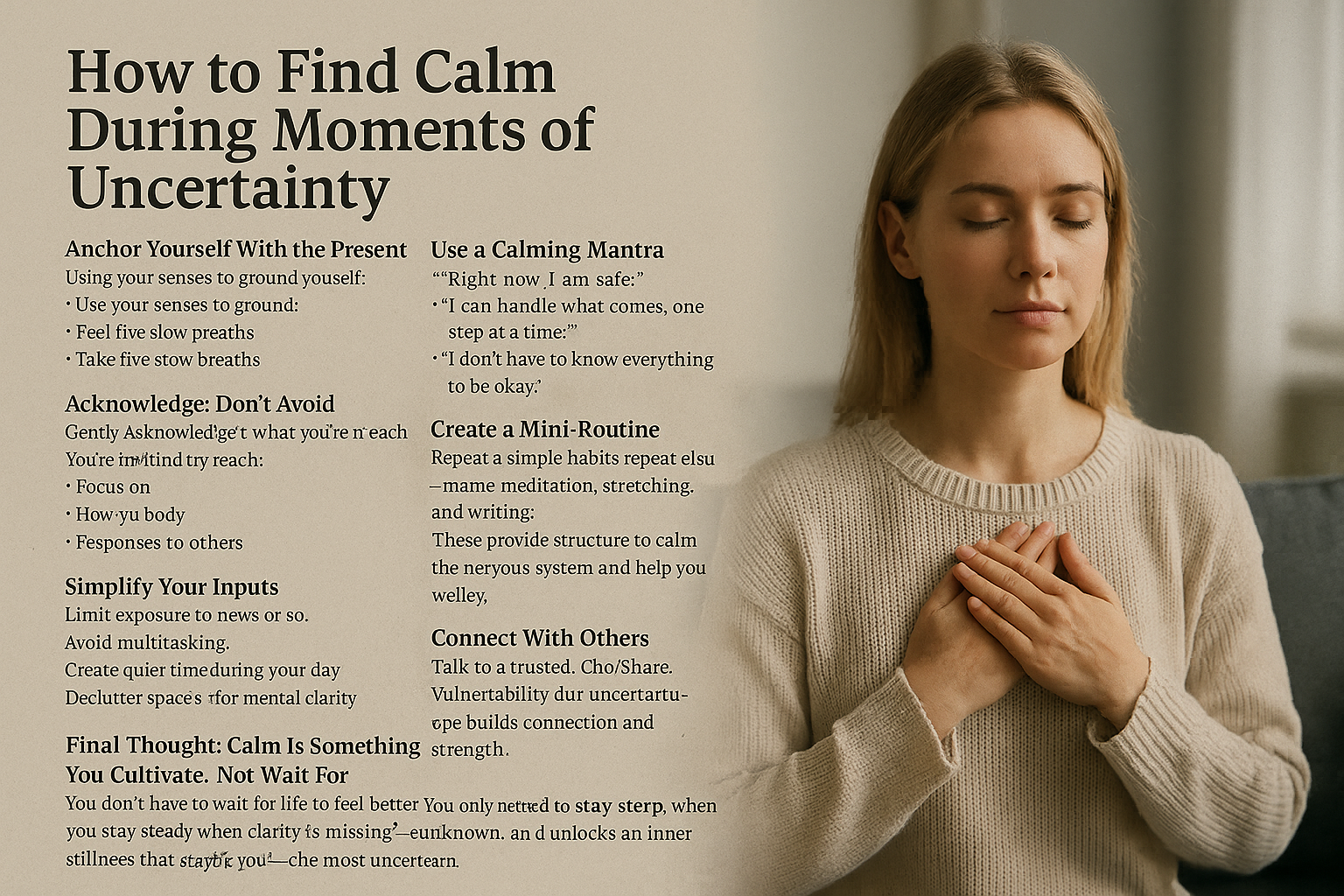Uncertainty is part of life, but that doesn’t make it easy. Whether it’s personal change, a difficult decision, or global events that feel out of your control, not knowing what comes next can be deeply unsettling. But even in the face of the unknown, you can find moments of peace. Calm isn’t about having all the answers — it’s about learning how to stay steady when clarity is missing.
Why Uncertainty Triggers Stress
The human brain craves predictability. When something uncertain arises, your mind immediately starts trying to solve or control it. This activates the stress response — your heart rate increases, your breath shortens, and anxious thoughts begin to spiral. You may feel tense, distracted, or emotionally flooded.
Understanding this response helps you approach it with compassion and strategy, rather than panic.
Anchor Yourself With the Present
Uncertainty pulls your mind into the future. The antidote is presence. Use your senses to ground yourself:
- Feel your feet on the floor
- Name three things you can see
- Take five slow breaths and follow the movement in your body
Your power lies in the now — not in trying to predict what hasn’t happened.
Acknowledge, Don’t Avoid
Pretending everything is fine doesn’t create calm — it creates disconnection. Instead, gently acknowledge what you’re feeling:
- “I feel anxious because I don’t know what’s coming.”
- “This uncertainty is making me uncomfortable, and that’s okay.”
Naming your emotion reduces its intensity and invites clarity.
Release the Need for Control
Trying to control what you can’t only deepens anxiety. Shift your energy toward what is within your reach:
- How you speak to yourself
- How you treat your body
- How you respond to others
- What actions you take today
Control what you can. Surrender what you can’t.
Simplify Your Inputs
When the world feels unstable, your nervous system becomes more sensitive. Minimize overstimulation:
- Limit exposure to news or social media
- Avoid multitasking
- Create quiet time during your day
- Declutter your space for more mental clarity
Simplifying your environment helps you access internal stillness.
Use a Calming Mantra
Repeating a calming phrase can help you self-soothe during stressful moments. Try:
- “Right now, I am safe.”
- “I can handle what comes, one step at a time.”
- “I don’t have to know everything to be okay.”
Speak it aloud or write it down — let it anchor you.
Practice Radical Acceptance
Calm comes not from resisting what is, but from accepting it. This doesn’t mean giving up — it means letting go of the fight against reality. Say to yourself:
- “This is how things are right now.”
- “I don’t have to like it, but I can accept it.”
From acceptance, you can respond more wisely and peacefully.
Create a Mini-Routine
During uncertainty, routines offer a sense of safety and rhythm. Choose a few simple habits to repeat each day — even just 5–10 minutes of meditation, stretching, or writing. These moments of structure calm the nervous system and help you feel more stable.
Connect With Others
Talk to someone you trust. Share how you’re feeling. Being heard and supported can soothe anxiety and remind you that you’re not alone. Vulnerability in times of uncertainty builds connection and strength.
Final Thought: Calm Is Something You Cultivate, Not Wait For
You don’t have to wait for life to feel stable to feel peace. Calm is something you can create — in your breath, your choices, your thoughts. When you stop resisting the unknown and start trusting your ability to navigate it, you unlock an inner stillness that stays with you — even in the most uncertain storms.
